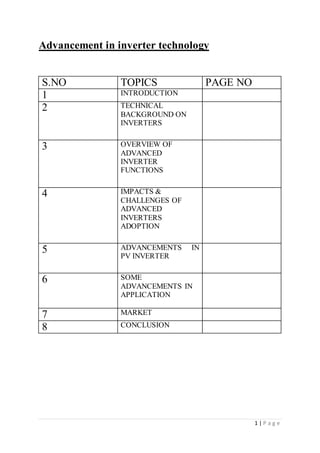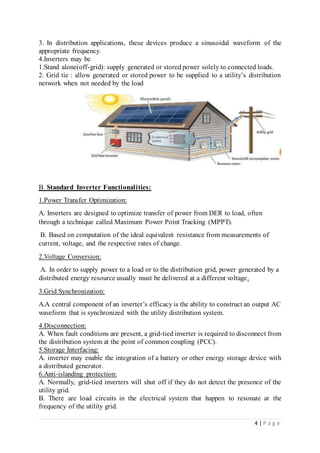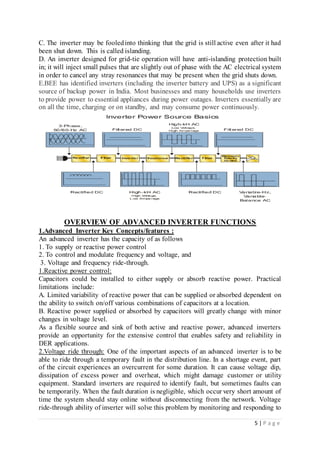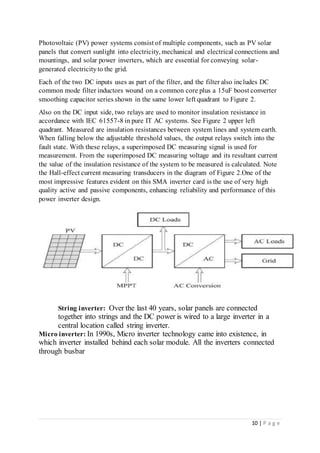The document discusses advancements in inverter technology, focusing on their fundamental role in converting direct current (dc) to alternating current (ac) in various applications, including photovoltaic and wind energy systems. It highlights advanced inverter functionalities such as reactive power control, voltage and frequency ride-through capabilities, and their impact on improving power distribution efficiency and grid reliability. Additionally, the document addresses challenges related to the integration and performance of these advanced inverters in modern energy systems.














